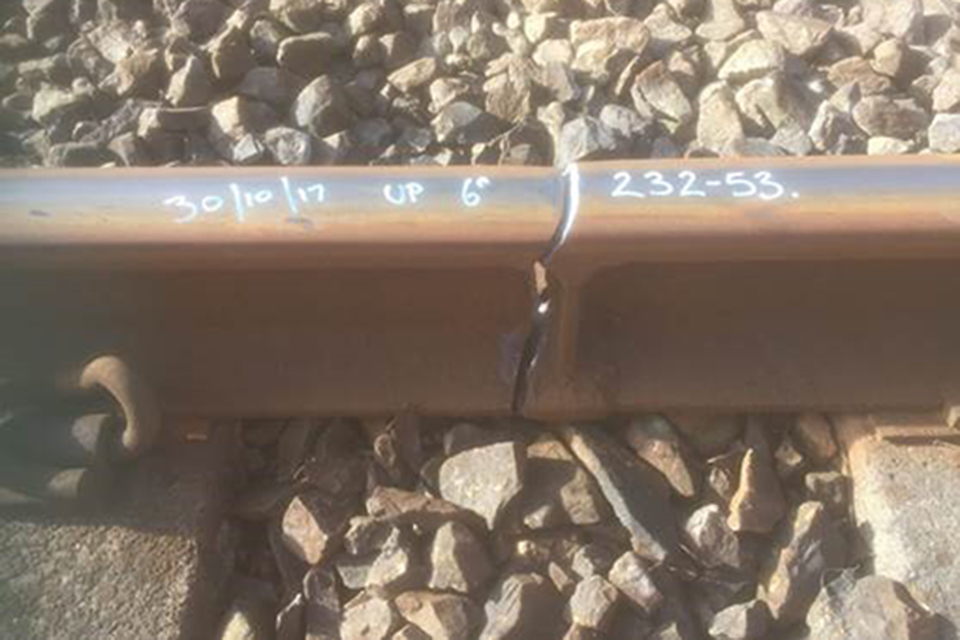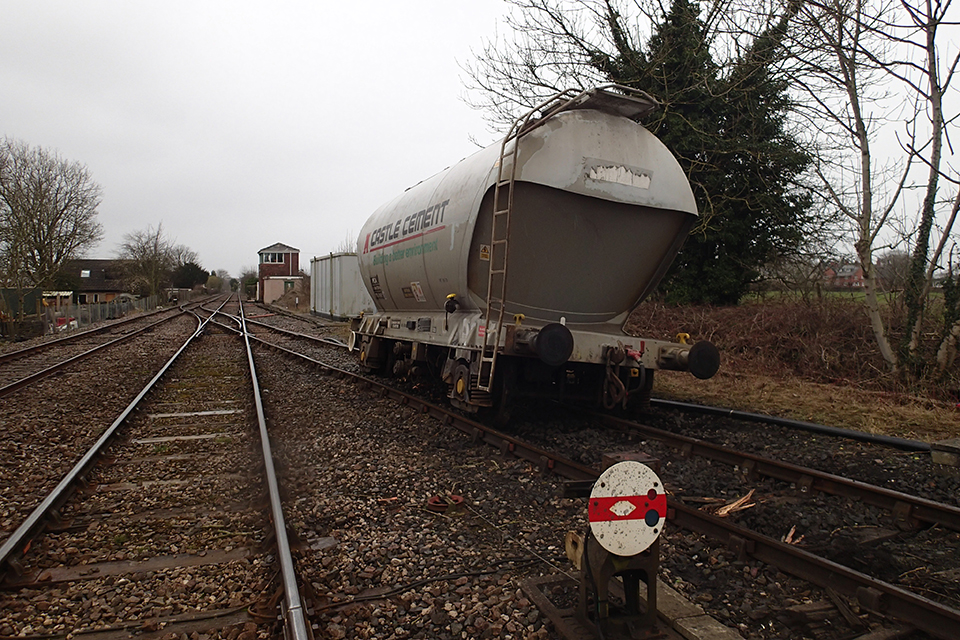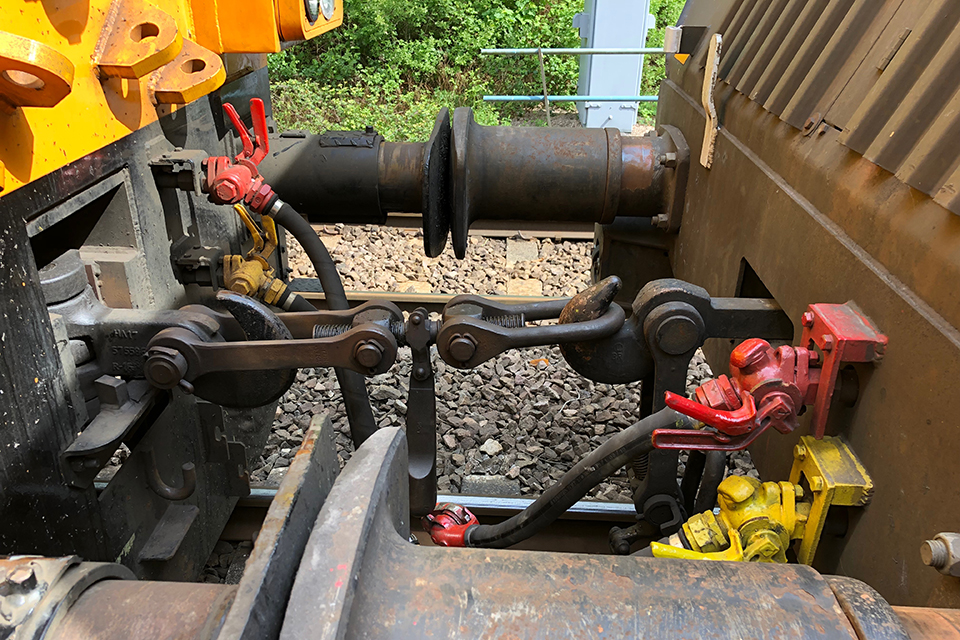Summary of learning - 8. The integrity of train braking systems - v3. March 2023
Published 21 April 2021
1. Purpose of this summary
The purpose of this document is to provide a repository of some of the most important areas of learning identified in RAIB’s investigations to date, cross-referenced to relevant reports. It therefore provides a reference source for those looking to understand real-world railway safety issues and potential control measures.
When preparing this document, RAIB has selected those issues which:
- have recurred in different RAIB investigations
- have still to be fully addressed
- could be a factor in the cause of a fatal accident
RAIB is aware that many of the issues raised have already been the subject of actions by duty holders when responding to RAIB recommendations, or are in the process of being addressed. The inclusion of a topic in this document should not be taken to mean that no action has been taken in response to relevant recommendations. However, its inclusion indicates that RAIB is of the view that the issue still needs to be actively managed by duty holders.
The current status of each recommendation made by RAIB can be checked by reference to the Index of RAIB recommendations, and details of the actions taken are published by ORR.
It is not the purpose of this document to quantify the risk associated with each of the identified safety issues. Readers seeking to understand the overall risk of harm associated with various dangerous events should refer to RSSB’s Annual Safety Performance Report. This presents historical information on actual harm caused, and estimates of risk based on extensive modelling.
2. Overview
The very first accident to be investigated by RAIB, a derailment at Hatherley, Gloucestershire, in 2005 (report 08/2006), happened because a handbrake was left applied on a wagon in a freight train after it had entered service. Since then, we have investigated many accidents and incidents connected with brakes and identified a number of areas of concern.

Wagons following derailment at Hatherley.
Being able to control the speed of a train is evidently vital for the safe operation of the railway. Normal practice on railways around the world is for the vehicles in a train to be equipped with power-operated brakes, which can be controlled by the driver and which will apply automatically to all parts of a train, should it become divided.
Older rail vehicles, and most freight vehicles, have brakes in which cast metal or composite shoes apply to the wheel treads to slow the train. In recent years, these have been largely superseded, particularly on passenger trains, by disc brakes. These use pads to grip discs which are fixed to the wheels or, more commonly, to the axle inboard of the wheels. Many modern passenger trains and locomotives also use dynamic braking. Such systems use the train’s traction motors as generators to provide much of the braking effort at normal running speeds.
Passenger trains and locomotives are normally also fitted with a parking brake to hold the train when it is stabled and therefore potentially without a source of power for the automatic braking system. Freight wagons have hand brakes which are typically applied manually via a wheel on the side of the vehicle.
Braking system issues can lead to runaways, derailments, damage to track, collisions with other trains and buffer stop strikes. The accident at Morlais Junction, Llangennech in 2020 (report 01/2022) showed that they can also result in major environmental damage and have the potential to affect the safety of our towns and cities.
3. Important areas for safety learning
The areas of significant concern to RAIB fall into the two main themes described below.
3.1 Maintenance of the braking system
Operators of rail vehicles are required to have suitable arrangements for maintaining them in safe condition. On the mainline railway this includes appointing an ‘entity in charge of maintenance’ (ECM) for each vehicle. The ECM ensures, through a system of maintenance, that the vehicle is in a safe condition to run. There are detailed legal requirements which apply to ECMs including (for freight wagons) the need for external certification.
Our investigations have found that, in some cases, the standard of wagon maintenance in place does not match the expectations of this legislation.
Extensive track damage was caused between Ferryside and Llangennech in 2017 (report 17/2018) when the wheelset on one of the wagons in a freight train ceased to rotate, leading to flats being created on the wheel tread. It was impacts from these wheel flats that damaged the track. A probable cause of the wheel ceasing to rotate was that the maintenance of the braking system on the wagons was being carried out in conditions which were not conducive to a consistently high standard of work. RAIB’s report recommended that the wagon owner and ECM should carry out a risk assessment of the facilities and process used for maintenance of the tank wagons concerned.

Example of track damage between Ferryside and Llangennech.
The adequacy of maintenance processes was also called into question following the accident at Morlais Junction, Llangennech in August 2020, in which a train of tank wagons derailed and caught fire (report 01/2022). RAIB’s investigation concluded that poor maintenance was a probable factor in the accident, and that insufficient action had been taken in response to the recommendation made following the 2017 Ferryside accident. RAIB also found that the rail freight sector’s approach to the maintenance and monitoring of the condition of wagons was not based upon best practice. Consequently, RAIB made a number of recommendations intended to improve maintenance practice and the management of wagon maintenance. The derailment of a freight train at Carpenters Road North Junction (near Stratford) in 2019 (safety digest 07/2019) also highlighted the potential for sub-optimal working environments to increase the likelihood of errors when undertaking maintenance activities on braking components.
Other aspects of brake system maintenance have also given cause for concern.
Undocumented modifications to a braking system, which prevented it from being properly adjusted, were the cause of an incident in 2019 on the Ffestiniog Railway. A locomotive ran away on a steep gradient and entered a single line section without authority (report 02/2020).
At Clitheroe in 2020 (report 16/2020), a wagon ran away from a cement works and derailed on trap points when it reached the main line. The runaway occurred in part because the wagon’s handbrake was providing insufficient brake force, most likely because the slack adjuster was not working correctly. The investigation found that a scheduled maintenance examination, which would probably have identified this defect, had not been carried out when it was due.

Derailed wagon following runaway at Clitheroe.
3.2 Train preparation and stabling
Even when a braking system is functioning correctly, a failure to operate it properly can lead to safety problems. This can be mitigated by effective train preparation.
Handbrakes must be released before a train departs, and the rotation of all the wheels should be the subject of a visual ‘roll-by’ examination as the train moves off. Failure to release a handbrake, and an inadequate roll-by check resulted in the derailment at Hatherley in 2006 (report 08/2006). It is also likely that a handbrake being left applied, and/or incorrectly adjusted, was the cause of the derailment of a railhead treatment train at Dunkeld & Birnam station in 2018 (safety digest 01/2019).
Following the addition or removal of vehicles forming a train, a brake continuity test should be carried out. Once the brake continuity test has been carried out, it is important that the braking system is not interfered with before the train starts. Train drivers should also carry out a running brake test to check that adequate retardation can be achieved in the prevailing conditions.
At Edinburgh in 2019, the driver of an overnight sleeper train was unable to stop their train which ran 650 metres past its intended station call. Our investigation (report 05/2020) found that, when the train was split earlier in the journey, a valve in the brake pipe was inadvertently closed, causing the brakes on the coaches to be inoperable. This occurred after the brake continuity test had been carried out. A running brake test was later carried out but did not alert the driver that the automatic air braking system was in a compromised state because the retardation produced by the locomotive’s dynamic brake masked the issue. RAIB recommended changes to the operating rules so that the brake continuity test is always carried out after all other duties and recommended a redesign of the valve involved.
The need for brake continuity tests to be the final duty undertaken before departure was further demonstrated in the incident at Crofton West Junction in 2020 (safety digest 06/2020). In this incident, a freight train was prepared for departure, including a brake continuity test, during the evening before departure. However, after train preparation was completed, but before departure, a group of trainees and an instructor visited the sidings and used the train to practise train preparation procedures. This led to the brake pipe valves between the locomotive and the wagons being closed, rendering the air brakes on the wagons non-operational. This was not detected before the train moved off the next morning and a running brake test was not carried out in accordance with the railway Rule Book once the journey was underway. The closure of these valves and the absence of a test which could have identified that inadequate brake force was available meant that the driver was unable to stop the train when it encountered restrictive signal aspects. The train subsequently passed two signals at danger and crossed a junction which was being protected by one of the signals.

Positions of brake pipe valves on locomotive involved in the SPADs at Crofton.
At 04:42 hrs on 17 January 2021, a rake of 22 wagons, 21 of which were loaded, ran away from Old Bank sidings at Toton (report 09/2021). As it ran away, the rake passed two red signals and, a short distance later, the leading four wagons derailed at a set of trap points. The leading two derailed wagons stopped foul of the adjacent running line. Fortunately, no trains were nearby when the derailment occurred. RAIB’s investigation identified issues with the management of the yard which resulted in no parking brakes or scotches being applied on the rake of wagons. RAIB has recommended improved working arrangements in freight yards to prevent this potentially dangerous incident from reoccurring.
A further incident showing the importance of correctly securing stabled trains occurred at around 11:52 hrs on 2 October 2022, when an unattended engineering train ran away from platform 3 at London Liverpool Street station (safety digest 08/2022). This runaway occurred because the parking brakes on the two locomotives on the train were not correctly applied, and because no hand brakes were applied on the wagons forming the train.
4. Rail industry’s strategic safety groups
The issues described in this document are addressed by several industry forums.
In relation to freight vehicles, the National Freight Safety Group facilitates continuous improvement of health, safety, wellbeing and sustainability in the freight sector by co‑operating and collaborating in managing system risk.
Reporting to this group, the Rail Freight Operations Group provides a forum for freight operating companies to discuss operational safety issues and share intelligence.
The Freight Technical Committee considers technical matters relating to the design, construction, maintenance, repair, interfaces, operation, knowledge, updates, and standards applicable to freight vehicles, as well as developing rail industry standards and codes of practice.
RSSB’s SPAD (signals passed at danger) risk group brings together stakeholders from across the industry to collaborate on measures to reduce SPADs and the likelihood of subsequent train accidents.
5. Relevant RAIB publications
- Derailment at Hatherley, 18 October 2005 (report 08/2006)
- Track damage between Ferryside and Llangennech, 30 October 2017 (report 17/2018)
- Derailment near Dunkeld & Birnam, 29 October 2018 (safety digest 01/2019)
- Derailment at Carpenters Road North Junction, near Stratford, 11 June 2019 (safety digest 07/2019)
- Runaway locomotive at Beddgelert, 16 April 2019 (report 02/2020)
- Loss of brake control approaching Edinburgh, 1 August 2019 (report 05/2020)
- Signals passed at danger at Crofton West Junction, 7 May 2020 (safety digest 06/2020)
- Runaway and derailment near Clitheroe, 9 March 2020 (report 16/2020)
- Runaway and derailment at Toton yard, 17 January 2022 (report 09/2021)
- Derailment at Morlais Junction, Llangennech, 26 August 2020 (report 01/2022)
- Runaway of an engineering train at London Liverpool Street station, 2 October 2022 (safety digest 08/2022)

